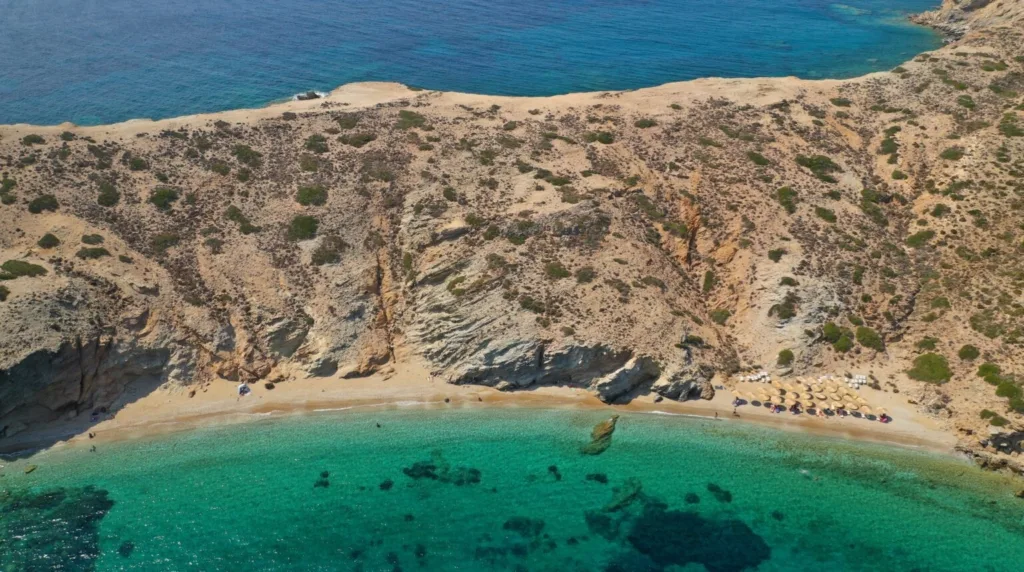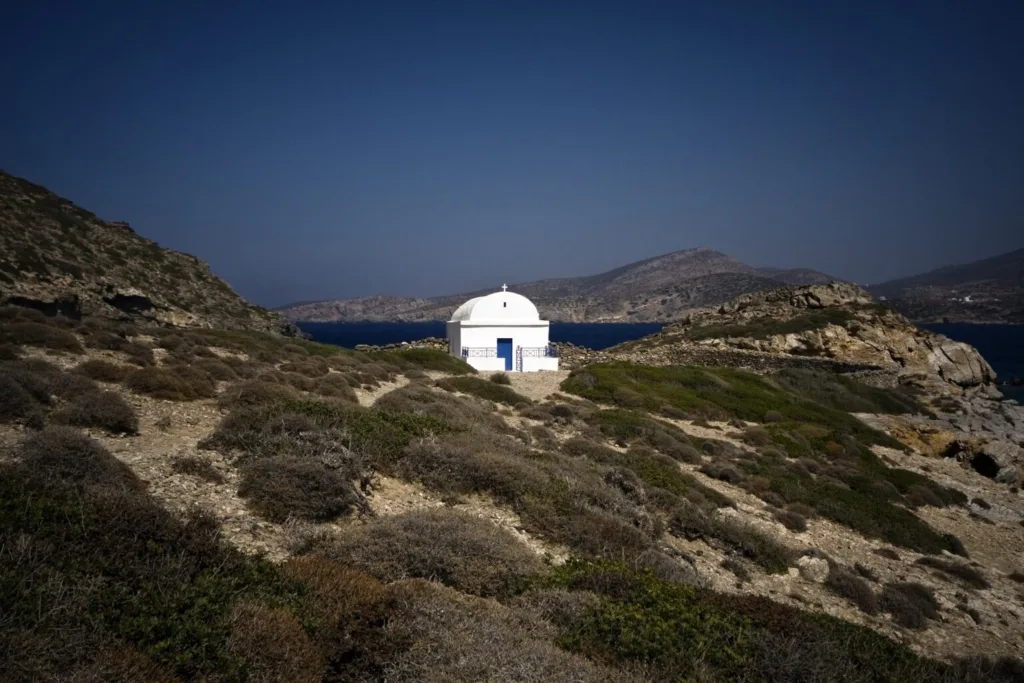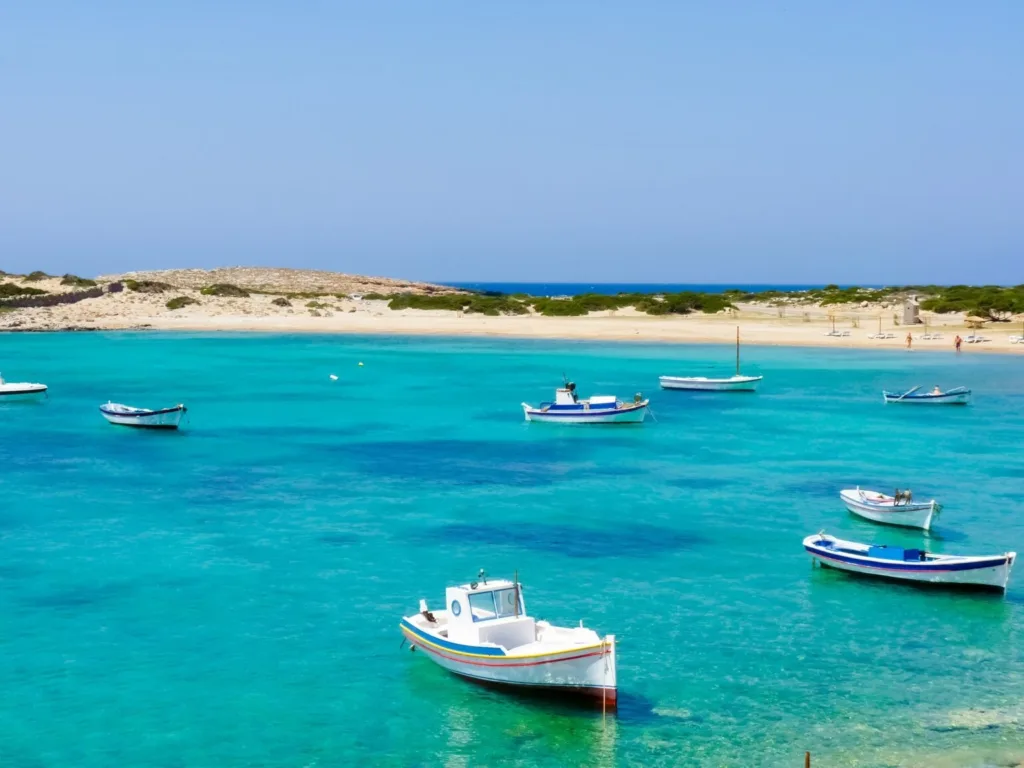Gramvousa: The Aegean islet with turquoise waters and a view of Amorgos

Πηγή Φωτογραφίας: ellinismos.gr//The name Gramvousa seems intertwined with Crete since the Imeri and Agria Gramvousa clusters are quite familiar to visitors of Chania. In 1821, it was the seat of a strong Venetian fortress and a den of rebellious Greeks.
Many confuse it with the more famous islets of Crete, but it is a different place, accessible only by boat.
The name Gramvousa seems intertwined with Crete since the Imeri and Agria Gramvousa clusters are quite familiar to visitors of Chania. In 1821, it was the seat of a strong Venetian fortress and a den of rebellious Greeks.
This name—a corruption of the Italian “Garabusa”—also corresponds to another islet in the southern Aegean, Gramvousa of Amorgos. It may not have the reputation of the Cretan Gramvousa, but the golden sandy beach, the turquoise waters and the view towards Amorgos have made it known to those who regularly visit the latter.

In the summers, it is honoured as a destination for a swim that is different from the usual ones, as it is only accessible by boat. Of course, this experience of the different does not only involve the beauty of the isolated coast of the small islet.
Arriving there, you will discover that this islet was inhabited until a few decades ago. You can see deserted houses, corrals, and paths of the people who lived here—difficult but surrounded by outstanding natural beauty.
An island with a past
At 3 miles in circumference, Gramvousa is the largest of the small islets scattered around Amorgos. Its northern part is considered inhospitable due to its exposure to the winds, but the southern part – where the beach mentioned above is also located – is windless.
This feature was, of course, exploited in the past by various pirates, who used the cove as an anchorage and shelter.
With Amorgos already inhabited since the 3rd millennium BC, it is not unreasonable that ancient traces of human presence were also found in Gramvousa. However, we do not know if it had a permanent population.
The islet is barren, without fruit trees, and with low vegetation. Despite this, there was water at the Psalida site, where a well was even built—although the inhabitants also stored rainwater at every opportunity for their needs.
Those who decided to live in Gramvousa made great efforts and grew wheat, pulses, semolina and onions on special beech trees on the island’s western side.
At the same time, they also developed animal husbandry while they also engaged in fishing, thus managing to make a living. They also collected snails, it is even said that the Gramvousa snails had a special delicacy.
Over time, finally, a small church was built that still dominates charmingly – dedicated to Saint Catherine, although you will often see it written as “Panagia”.

This life had its beauties but remained arduous: they often had to take the animals for grazing in Anydos, 8 miles to the south. Thus, with the gradual development of Amorgos, the inhabitants of Gramvousa began to leave it, preferring the comforts offered by the opposite coast.
The last to leave the islet were the Roussou family in the 1990s.
How to get to Gramvousa?
Visitors want to visit the aforementioned “golden” beach, which some call Ammos. Moreover, it remains internationally famous due to the The Guardian ranking among the 25 best in Europe for 2018.
The fact that some (well-kept) sunbeds with grass umbrellas are set up in the summer has created a widespread misunderstanding, as some consider Ammos an organised beach. However, it remains unorganised: apart from the sunbeds, there is no provision. This means you should come prepared with your own umbrella (in case of crowds), sunscreen, sunglasses, cold water, and something to eat.
Supplies can be bought from the beach canteen in Kalotaritissa, on the opposite coast in Amorgos.

Every summer, you will find regular routes to Gramvousa from the cove of Kalotaritissa: the local boats will take you to the island within five minutes. When the weather is good and the winds are not blowing against you, you can also come by boat from Katapola.
Of course, if you have your own boat, all this automatically becomes easier. After all, many speedboats and inflatables arrive here at the height of the Greek summer.
Hari Simvolidi is a columnist for Travel. Translated by Paul Antonopoulos.
Source: GCT
Διαβάστε όλες τις τελευταίες Ειδήσεις από την Ελλάδα και τον Κόσμο






























Το σχόλιο σας